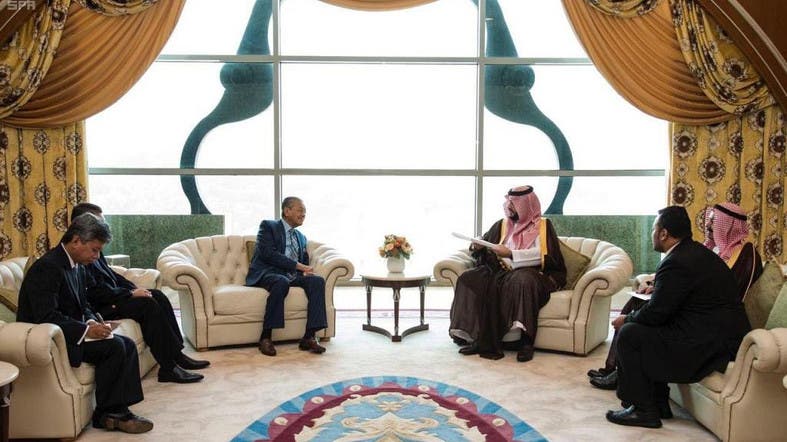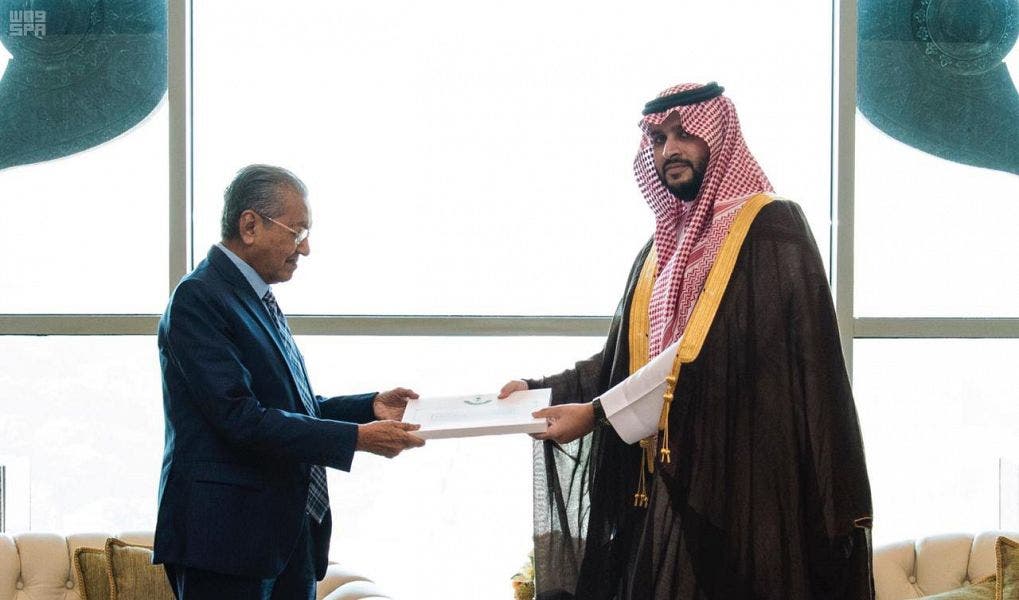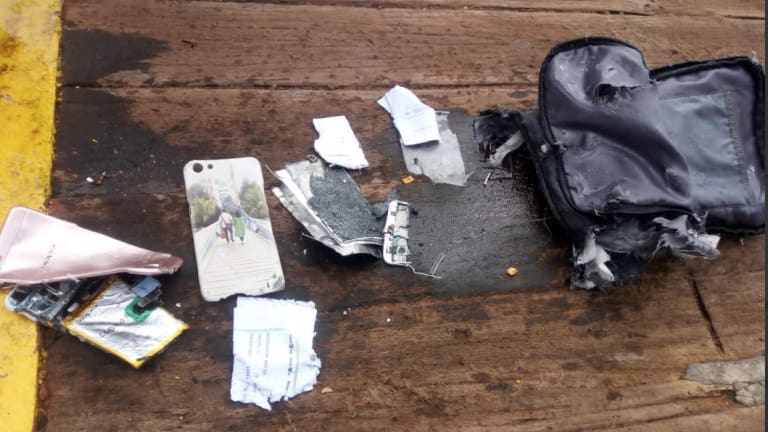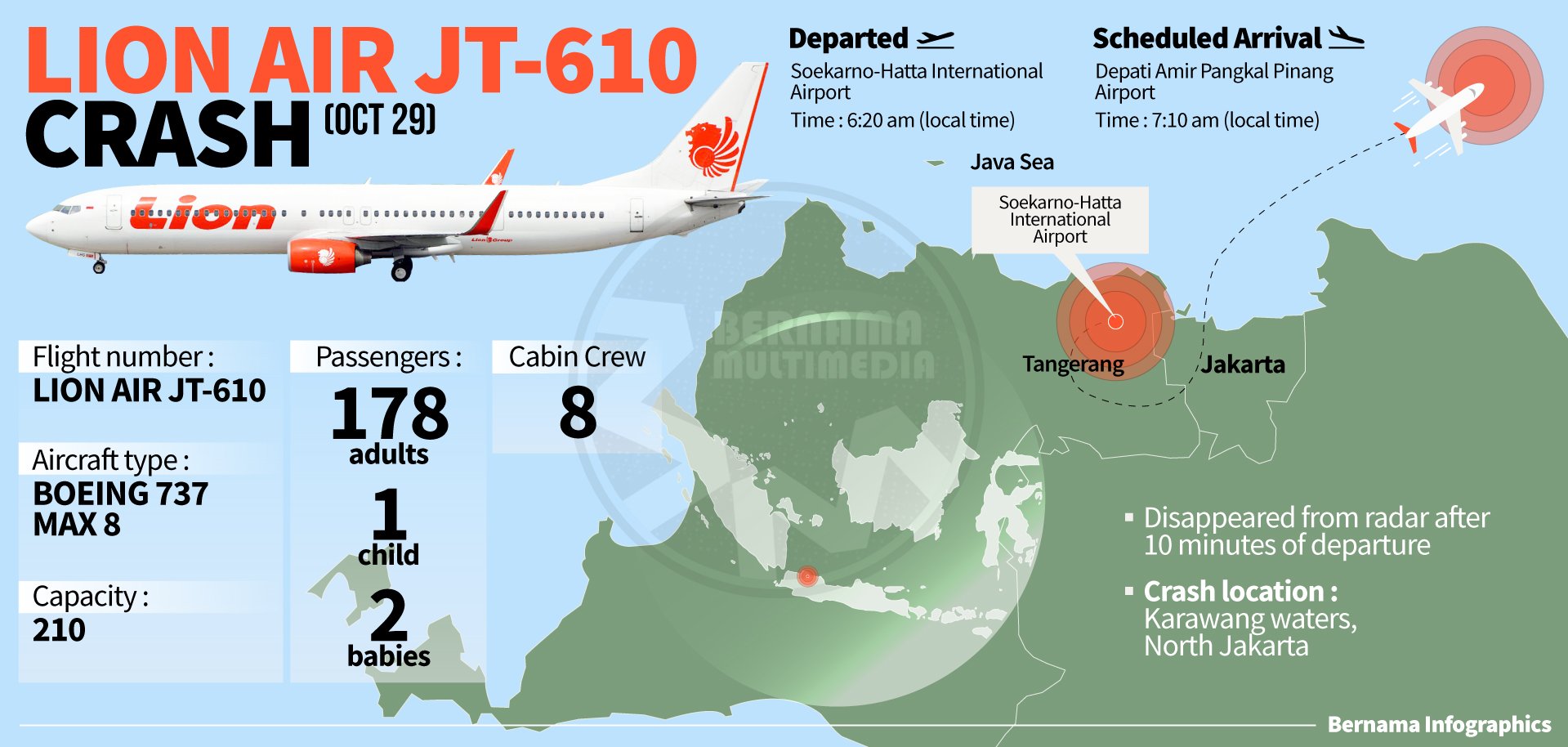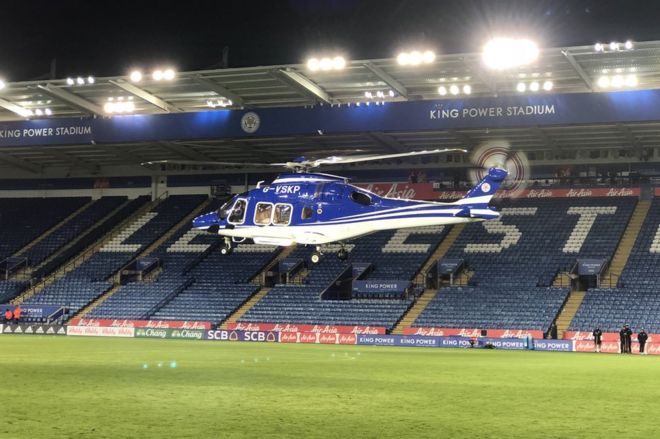
The operations director at the agency, Bambang Suryo Aji, says the search effort is focusing on finding bodies.
He said six body bags have been used so far for human remains recovered.
Aji said the location of the plane hull hasn’t been identified yet. Waters where it sank are up to 30 metres deep.
The search is currently planned to last seven days and could be extended.
The passenger plane had only been in service two months.

Police officers carry a body bag containing the remains recovered from the area where a Lion Air passenger jet crashed. Picture: APSource:AP
Lion Air said the plane was delivered on August 15 and had clocked 800 hours of flying time before the disaster.
There are no Boeing 737 MAX 8s in use by Australian Airlines, however Virgin Australia has a number of MAX 8s on order due to arrive by November 2019.
A Virgin Australia spokeswoman said it was too soon to comment on whether Virgin would review that order, in light of the Indonesia crash.
She said the airline would not comment on how many MAX 8s it had ordered.

Members of a rescue team transfer body bags into a vehicle at the port in Tanjung Priok, North Jakarta. Picture: APSource:AFP
The Boeing 737 MAX 8 vanished from the radar 13 minutes after takeoff.
Boeing’s 737 MAX fleet first went into service last year and was in use by more than 100 airlines worldwide.
The MAX 8 model can seat up to 210 passengers and is a single-aisle jet powered by twin CFM LEAP-1B engines. It is 39.5m long and has a 35.9m wingspan.
Boeing said in a statement it was “deeply saddened by the loss of Flight JT 610”.
“We express our concern for those on board, and extend heartfelt sympathies to their families and loved ones,” the statement read.
“Boeing stands ready to provide technical assistance to the accident investigation.”
The plane was headed to Pangkal Pinang, an island east of Sumatra. It was carrying 189 people — including two infants and its crew. The airline is known for its poor safety record.

Putri lost her husband and child in the horrific crash. Picture: AFP)Source:AFP
The aircraft disappeared near Karawang in West Java province, said Yusuf Latif, a spokesman for the National Search and Rescue Agency.
Lion Air flight JT610 requested to return to base, with air traffic control losing contact with the pilots after approving the request, Yohanes Sirait, a spokesman for the country’s air navigation authorities, said.
Indonesia’s disaster agency posted photos online of a crushed smartphone, books, bags and parts of the aircraft fuselage that had been collected by search and rescue vessels.
President Joko Widodo ordered the transport safety commission to investigate and urged Indonesians to “keep on praying” as rescuers search for victims.

An image and released by Indonesia's National Search And Rescue Agency shows rescue personnel displaying a piece of wreckage from Lion Air flight JT 610. Picture: AFPSource:AFP
A spokesperson for DFAT said the Australian Embassy is making urgent enquiries to determine if any Australians were on board the flight.
“The Department of Foreign Affairs and Trade is following closely reports of the crash into the sea of Lion Air flight JT-610.” the spokesperson said.
“Indonesian authorities are undertaking a search and rescue operation and, at this stage, there are no reports of survivors.
“The Australian Embassy in Jakarta is making urgent enquiries with local authorities to determine if any Australians were on board the flight.
Piloting the aircraft was Captain Bhavye Suneja, assisted by co-pilot Harvino, who together had a combined total of 11,000 hours flying time, according to a statement by Lion Air.
They were assisted by flight attendants Mery Yulianda, Alviani Hidayatul Solikha, Damayanti Simarmata, Deny Maula, Citra Noivita Anggelia and Shintia Melina.
Three of the cabin crew members were in training, the statement said.

Bhavye Suneja was the pilot om Lion Air JT610.Source:Supplied

Flight attendant Mery Yulyanda. Picture: InstagramSource:Supplied

Cabin crew member Alfiani Hidayatul Solikah was included in the passenger manifest of the JT 610 Lion Air plane. Picture: InstagramSource:Supplied
Weather conditions were normal but the brand new aircraft had experienced a technical issue on its previous flight.
In the aftermath of the crash, friends and relatives prayed and hugged each other as they waited at Pangkal Pinang’s airport.
At the National Search and Rescue Agency headquarters in Jakarta, family members turned up, hoping desperately for news.
Feni, who uses a single name, said her soon to be married sister was on the flight, planning to meet relatives in Pangkal Pinang.

Family members wait for information at Pangkal Pinang airport. Picture: AFPSource:AFP
“We are here to find any information about my younger sister, her fiance, her in-law to be and a friend of them,” Feni said.
“We don’t have any information,” she said, as her father wiped tears from reddened eyes.
“No one provided us with any informationthat we need. “We’re confused. We hope that our family is still alive,” she said.
Indonesia’s Finance Minister Sri Mulyanialso arrived at the agency and met with its chief, seeking information about 20 finance ministry staff who were on the flight.

Relatives of passengers comfort each after Lion Air flight JT 610 crashed with 189 people on board. Picture: APSource:AP

Devastated family members comfort each other as they wait for news on a Lion Air plane that crashed off Java Island at Depati Amir Airport in Pangkal Pinang. Picture: APSource:AP
Meanwhile, Australian officials and contractors are being instructed by the Department of Foreign and Trade to avoid flying with Lion Airlines after the horrific crash.
The crash is yet another setback for the rapidly growing Indonesian aviation sector which infamously had all airlines black-listed from entering European airspace following a spate of incidents and reports of deteriorating safety standards during the 1990s.
The EU removed the ban in 2016, but by 2013 Lion Airlines had landed itself in the headlines after a Bali-bound Boeing 737 crashed into the sea while attempting to land at Ngurah Rai International Airport. In this instance, all 108 passengers and crew survived.

Debris is recovered from the crash site. Picture: Twitter, @Sutopo_PNSource:Twitter
Executive Chairman of CAPA Centre for Aviation Peter Harbison said that Lion Airlines had expanded rapidly and become one of the largest markets in Indonesia in a short amount of time.
“It is one of the youngest fleets in the world and now has 235 aircrafts and 450 on order, he said.”
“It’s grown from virtually nothing at the beginning of this century to take that position.”
Mr Harbison said that in principle a rapidly expanding company would put pressure on maintaining logistics and safety, but also added that Lion Airlines’ growth had slowed considerably over the last five years.
“Most of the low cost carriers are fairly new and so they may not have that fixed way of doing things, the bureaucracy that comes with a big business that has been operating for 30, 40, 50 years.”

A vessel belonging to Indonesian energy firm Pertamina official reported seeing more debris. Picture: Sutopo Purwo Nugroho — @Sutopo_PN, TwitterSource:Twitter
PLANE DEBRIS SPOTTED IN OCEAN
A tugboat crew in Karawang reported seeing “debris of a plane” in the water, and a vessel belonging to Indonesian energy firm Pertamina official reported seeing more debris, including plane seats, near its offshore facility in the Java Sea.
Pictures and video released by Indonesian Disaster Mitigation Agency appeared to show personal items including a bag, phone and documentation among suspected debris from the crashed plane.
Indonesian Search and Rescue Agency (Basarnas) chief M Syaugi said the agency had already found other debris from the aircraft including mobile phones and buoys.

A commercial vessel surveys the oil slick and small floating debris at what is believed to be the crash site of the Boeing 737. Picture: Indonesia RescueSource:Supplied

Facebook images of debris from Lion Air Flight JT610, which crashed after leaving Jakarta. Picture: SuppliedSource:Supplied

Facebook images of debris and clothing from Lion Air Flight JT610. Picture: SuppliedSource:Supplied

Possible debris from the plane crash pulled from the water. Picture: @Sutopo_PN — Head of PR of National Board for Disaster Management AgencySource:Twitter

Facebook images of debris and what appears to be an oxygen mask. Picture: SuppliedSource:Supplied

Relatives of passengers comfort each other as they wait for news on a Lion Air plane that crashed off Java Island at Depati Amir Airport in Pangkal Pinang. Picture: APSource:AP
DEADLY HISTORY
Just six months ago, a Lion Air plane skidded off the runway at Djalaluddin Airport in Gorontalo, Indonesia. None of the 174 passengers and seven crew members suffered injuries, with the incident destroying the plane’s landing gear.
In 2013 a Lion Air jet with a rookie pilot at the controls undershot the runway and crashed into the sea in Bali, splitting the plane in two. Several people were injuredin the crash, although no one was killed.
The last major accident in Indonesia was in December 2014 when AirAsia Indonesia’s Airbus A320 aircraft crashed into the waters after taking off from Surabaya to Singapore with 162 people on board.
Indonesia relies heavily on air transport to connect its thousands of islands but has a poor aviation safety record and has suffered several fatal crashes in recent years.

Passengers board a Lion Air Boeing 737-800 aircraft back on October 10. Picture: AFPSource:AFP
A 12-year-old boy was the sole survivor of a plane crash that killed eight people in mountainous eastern Indonesia in August.
In August 2015, a commercial passenger aircraft operated by Indonesian carrier Trigana crashed in Papua due to bad weather, killing all 54 people on board.
The European Union banned Lion Air from entering the airspace of any member state in 2006 after being deemed unsafe due to a poor safety record.
The EU lifted the ban in 2016, and in September this year, the International Civil Aviation Organisation gave the airline a top safety ranking.
Global airline rating agency AirlineRatings.com also moved the Indonesia-based carrier to its top safety tier.

 KUALA LUMPUR: Former prime minister Najib Razak is opposing the prosecution’s move to transfer the case against him relating to SRC International to the Palace of Justice in Putrajaya.
KUALA LUMPUR: Former prime minister Najib Razak is opposing the prosecution’s move to transfer the case against him relating to SRC International to the Palace of Justice in Putrajaya.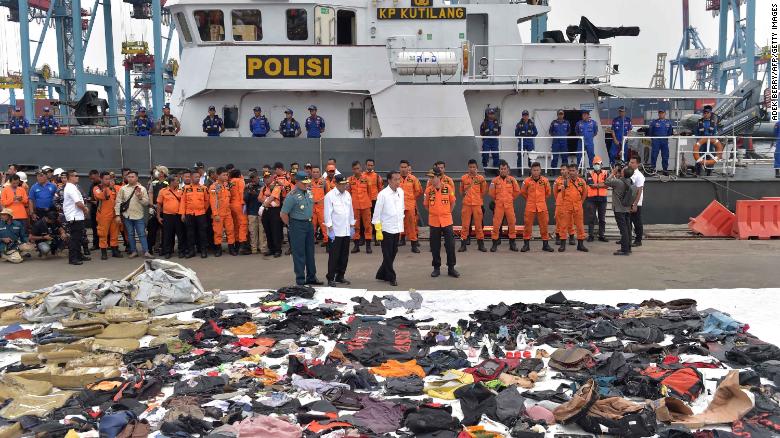
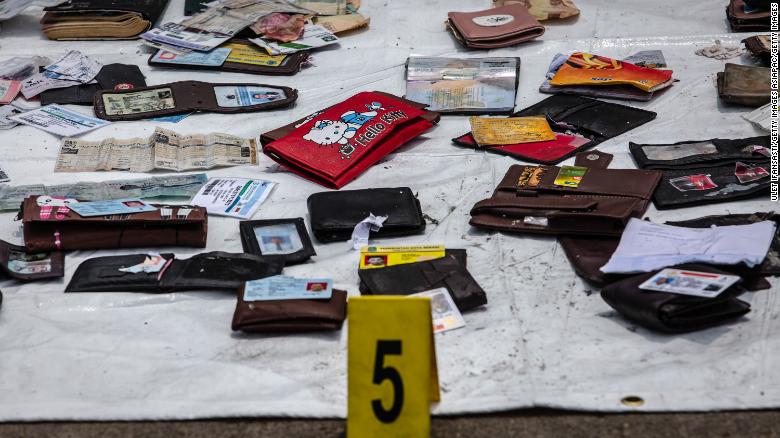
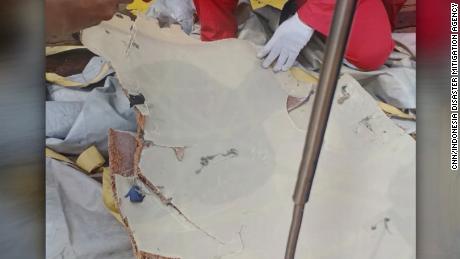
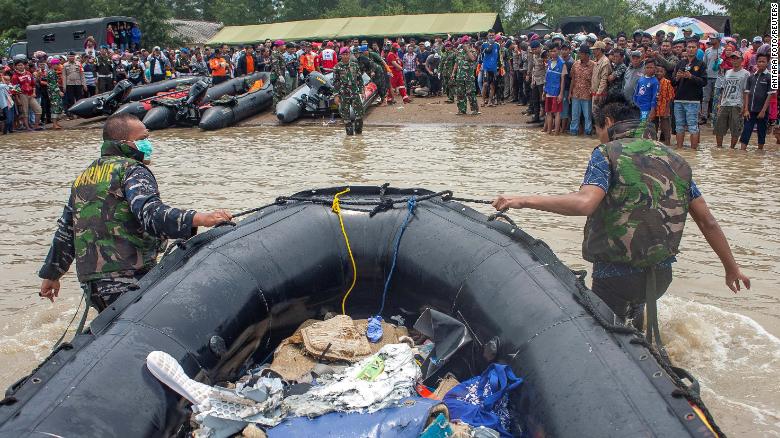

 Huang Qiang was charged with raping the national diver, then aged 20, at the National Aquatic Centre in Bukit Jalil on Sept 26 last year. (Bernama pic)
Huang Qiang was charged with raping the national diver, then aged 20, at the National Aquatic Centre in Bukit Jalil on Sept 26 last year. (Bernama pic)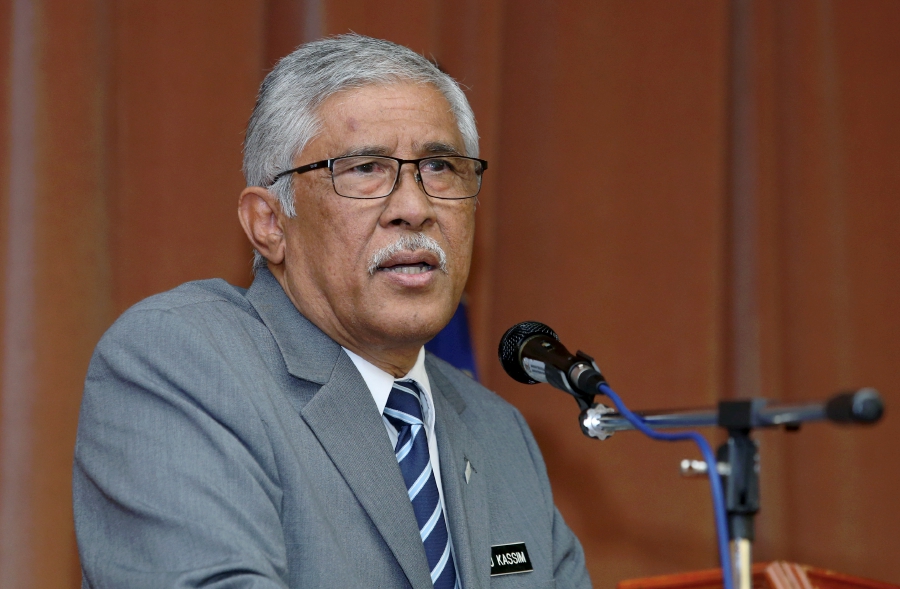
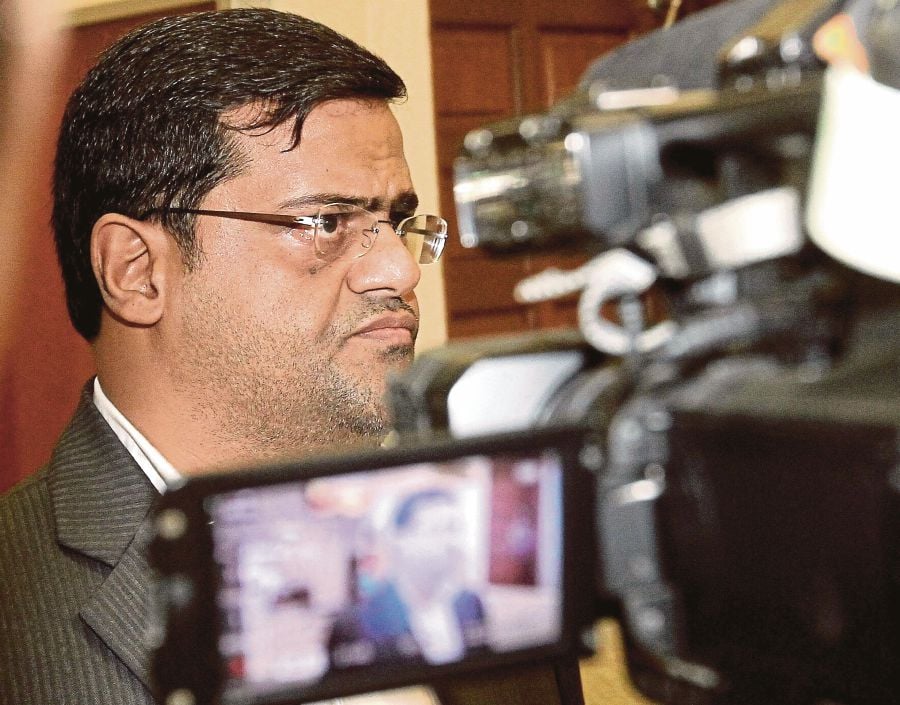


 Perlis police chief Noor Mushar Mohd. (Courtesy of PDRM)
Perlis police chief Noor Mushar Mohd. (Courtesy of PDRM)

 Thomas said Malaysia also has a right to recover the US$1.46 billion already paid to IPIC. ― Picture by Hari Anggara
Thomas said Malaysia also has a right to recover the US$1.46 billion already paid to IPIC. ― Picture by Hari Anggara
 KUALA LUMPUR: Bank Negara Malaysia today halved the minimum amount of cash and other physical transactions that must be reported by banks to RM25,000, seen as part of efforts to tighten the noose on criminal activities and money laundering.
KUALA LUMPUR: Bank Negara Malaysia today halved the minimum amount of cash and other physical transactions that must be reported by banks to RM25,000, seen as part of efforts to tighten the noose on criminal activities and money laundering.
